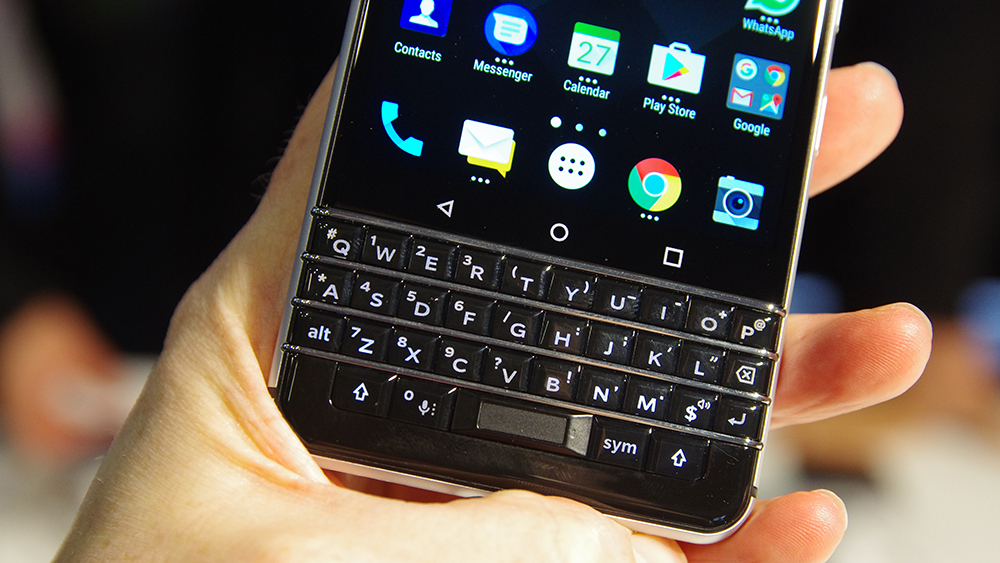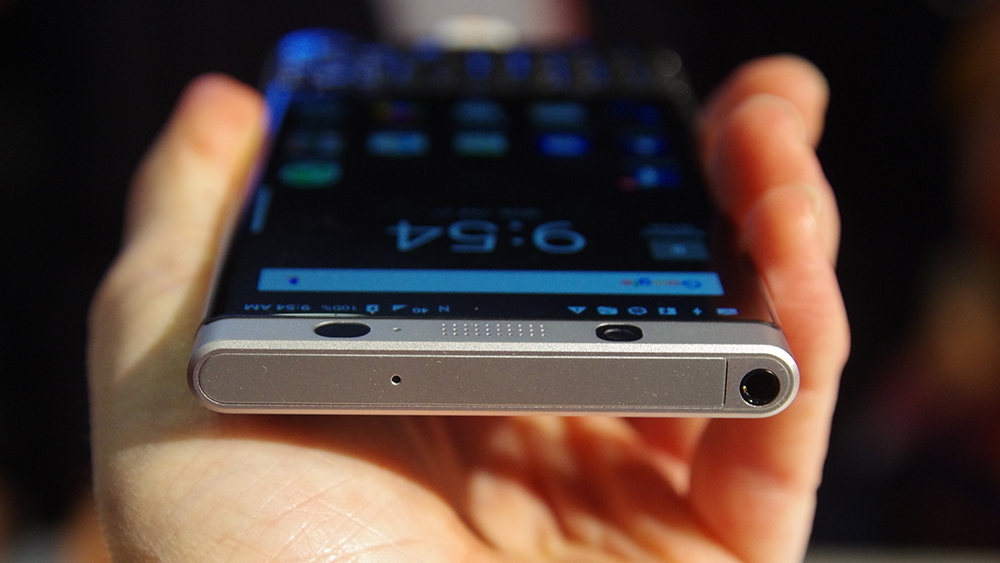BlackBerry KeyOne hands on: the best BlackBerry phone since the Priv
BlackBerry's latest effort is an enterprise-flavoured return to form

Remember the Priv? That weird passport-sized, keyboard-equipped Android handset that didn't fit very well in your pocket? Well, BlackBerry has released its successor (sort of) and it's called the BlackBerry KEYone.
Just like the Priv, the KEYone has a physical keyboard with touch-sensitive tricks; it's also got the advantage of being manageable, pocketable and actually rather nice to look at.
Key specs
| Display | 4.5in, 3:2 aspect ratio, 1,680 x 1,080 screen |
| CPU | 2GHz Qualcomm Snapdragon 625 processor |
| RAM | 3GB |
| Storage | 32GB |
| Expandable memory | microSD slot |
| Rear Camera | 12-megapixel f/2 with phase-detect autofocus and dual-LED flash |
| Front camera | 8-megapixel f/2.2 |
| OS | Android 7 Nougat |
| Price | $549 |
| Release date | April 2017 |
Key features and first impressions
Physical keyboards are a feature that virtually no mainstream manufacturers are willing to explore. We've always found this a bit baffling - there's at least a small market of people who prefer actual keyboards, but so far BlackBerry is the only company that still bothers to try and serve it. But how is its latest attempt?
Well, it isn't typical BlackBerry fare, that's for sure. The click of each domed key is positive enough, but it's a little soft and rubbery in feel - a long way from the hard, plastic keys of old. And yet we found it easy enough to type on quickly when we tried it out at BlackBerry's stand at MWC. The keys are nicely separated and the spacebar also doubles as a fingerprint reader.
It's also a pretty attractive handset, both to look at and to hold in your hand. It's constructed from matte aluminium in silver or black; has a Gorilla Glass 4 screen; has a 4.5in, 3:2 aspect ratio display with a resolution of 1,620 x 1,080; and there's a 12-megapixel camera on the rear (based on a Sony-manufactured sensor) with phase-detect autofocus, a bright aperture of f/2 and a dual-LED flash.
We rather like the rounded edges and textured, soft-touch plastic back, and while the phone is a little light, it's definitely the best-looking phone since TCL began to produce BlackBerry handsets, and the most eye-catching BlackBerry since the Priv. More importantly, it's a phone that begs to be used one-handed, due to its handily narrow profile.

What the KEYone certainly isn't, though, is a flagship smartphone. It runs a 2GHz Qualcomm Snapdragon 625 processor instead of one of its top-of-the-line 820, 821, 825 or 835 processors, has 3GB of RAM and 32GB of storage.
Get the ITPro daily newsletter
Sign up today and you will receive a free copy of our Future Focus 2025 report - the leading guidance on AI, cybersecurity and other IT challenges as per 700+ senior executives
Still, the phone felt perfectly responsive in use and the positive flipside of this decision is that theoretically, it should be more efficient than most, especially when coupled with the high-capacity 3,505mAh battery. For reference, the Moto Z Play offers a similar combination of battery and processor, and that phone achieved among the best battery-life results we've ever seen.
As for software, the BlackBerry KEYone has Android 7 Nougat onboard, as you'd expect of a smartphone launched in 2017. It also comes with the usual selection of BlackBerry software preinstalled, including BlackBerry's signature business productivity and security software like BlackBerry Hub, DTEK and BBM.
As is typical for BlackBerry, you can also expect to find a host of enterprise device management options, allowing IT managers to remotely lock and wipe devices, as well as implementing security policies governing their use.
Early verdict
BlackBerry's decline as a brand has been sad to see over the past few years, but it's good to see it's not bowing out without a fight. It appears to have learned that a physical keyboard is its principal strength, for one thing.
BlackBerry used to rule the smartphone roost, and with good reason. Its enterprise credentials remain unrivalled, whether you're an IT manager looking for a standard-issue smartphone or an executive who wants a device that can be used to rattle out long emails with ease.
With the right promotion, we can see the KEYone potentially starting to reverse the company's fortunes - particularly within enterprise market. It's an excellent business-grade smartphone; although consumers may be put off by the fact that it will cost a rather hefty $549 when it ships in April.
-
 Bigger salaries, more burnout: Is the CISO role in crisis?
Bigger salaries, more burnout: Is the CISO role in crisis?In-depth CISOs are more stressed than ever before – but why is this and what can be done?
By Kate O'Flaherty Published
-
 Cheap cyber crime kits can be bought on the dark web for less than $25
Cheap cyber crime kits can be bought on the dark web for less than $25News Research from NordVPN shows phishing kits are now widely available on the dark web and via messaging apps like Telegram, and are often selling for less than $25.
By Emma Woollacott Published